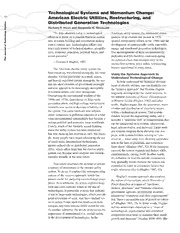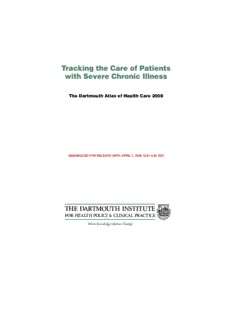
The Dartmouth Atlas of Health Care 2008 PDF
Preview The Dartmouth Atlas of Health Care 2008
Tracking the Care of Patients with Severe Chronic Illness The Dartmouth Atlas of Health Care 2008 EMBARGOED FOR RELEASE UNTIL APRIL 7, 2008 12:01 A.M. EDT THE DARTMOUTH INSTITUTE FOR HEALTH POLICY & CLINICAL PRACTICE Where Knowledge Informs Change EMBARGOED FOR RELEASE UNTIL APRIL 7, 2008 12:01 A.M. EDT Library of Congress Cataloging-in-Publication Data The Dartmouth Institute for Health Policy and Clinical Practice Tracking the Care of Patients with Severe Chronic Illness/The Dartmouth Institute for Health Policy and Clinical Practice ISBN 978-0-9815862-0-5 Medical care – United States – Marketing – Maps. 2. Health facilities – United States – Statistics. I. Title. Copyright 2008 The Trustees of Dartmouth College All rights reserved. The reproduction or use of this report in any form or in any information storage or retrieval system is forbidden without the express written permission of the publisher. EMBARGOED FOR RELEASE UNTIL APRIL 7, 2008 12:01 A.M. EDT Tracking the Care of Patients with Severe Chronic Illness: The Dartmouth Atlas of Health Care 2008 Lead Author: John E. Wennberg Co-Authors: Elliott S. Fisher, David C. Goodman, and Jonathan S. Skinner Editor: Kristen K. Bronner Lead Analyst: Sandra M. Sharp The Dartmouth Institute for Health Policy and Clinical Practice Center for Health Policy Research Dartmouth Medical School Lebanon, New Hampshire 03766 (603) 653-0800 http://www.dartmouthatlas.org The authors wish to thank Shannon Brownlee for editorial assistance. EMBARGOED FOR RELEASE UNTIL APRIL 7, 2008 12:01 A.M. EDT EMBARGOED FOR RELEASE UNTIL APRIL 7, 2008 12:01 A.M. EDT The Dartmouth Atlas Project Founder: John E. Wennberg, M.D., M.P.H. Principal Investigator: Elliott S. Fisher, M.D., M.P.H. Co-Principal Investigator: David C. Goodman, M.D., M.S. The Dartmouth Atlas of Health Care Working Group Kristen K. Bronner, M.A. Thomas A. Bubolz, Ph.D. Chiang-Hua Chang, M.S. Vincent J. Fusca III, M.M.S. Daniel J. Gottlieb, M.S. Jia Lan, M.S. Zhao Peng, M.S. Stephanie R. Raymond, B.A. Sandra M. Sharp, S.M Jonathan S. Skinner, Ph.D. Dean T. Stanley Jason Sutherland, Ph.D. Dongmei Wang, M.S. Phyllis Wright-Slaughter, M.H.A. Atlas design by Jonathan Sa’adah and Elizabeth Adams Intermedia Communications The research on which the Dartmouth Atlas Project is based was made possible by grants from The Robert Wood Johnson Foundation in association with a funding consortium including The Wellpoint Foundation The Aetna Foundation The United Health Foundation The California Healthcare Foundation EMBARGOED FOR RELEASE UNTIL APRIL 7, 2008 12:01 A.M. EDT Table of Contents Introduction: Health Care Spending, the Care of the Chronically Ill, and the Problem of Supply-Sensitive Care .................1 Why do some regions spend more and do more? .....................................................2 When is more care worse? ........................................................................................3 Why we are interested in measuring care at the end of life .......................................4 The contents of this Atlas...........................................................................................5 Chapter 1: Chronic Illness and the Problem of Supply-Sensitive Care .......................9 Is more care better? .................................................................................................11 How can more care be worse? ................................................................................13 Understanding supply-sensitive care .......................................................................13 Implications for patient preferences .........................................................................16 Implications for evaluating efficiency in managing chronic illness ...........................17 Chapter 2: Variation Among States and Regions in Medicare Spending for Severe Chronic Illness .......................................................21 Variation in Medicare spending among states and regions .....................................22 The relationship between spending, price, and volume ...........................................26 The relationship between sectors of care ................................................................28 Medicare inpatient spending ....................................................................................30 Medicare spending according to sector ...................................................................33 Conclusions .............................................................................................................37 Chapter 3: How America’s Best Hospitals Manage Chronic Illness ..........................39 Variation among America’s best hospitals ...............................................................42 Volume or price: Which matters most? ....................................................................43 How are resources used? ........................................................................................46 How intensely are patients treated? .........................................................................52 Evaluating the relative efficiency of academic medical centers ...............................54 Benchmarking excess spending due to overuse of hospitals and physician visits ..55 Evaluating performance ...........................................................................................56 Assumptions and facts concerning coordination between sectors of care ..............60 Assumptions and facts concerning “systemness” ....................................................61 Care intensity and patient choice .............................................................................62 Conclusions .............................................................................................................64 vi The DarTmouTh aTlas of healTh Care 2008 EMBARGOED FOR RELEASE UNTIL APRIL 7, 2008 12:01 A.M. EDT Tracking the Care of Patients with Severe Chronic Illness Chapter 4: Evaluating the Management of Chronic Illness in Los Angeles ..............67 How Health Care Varies Among Los Angeles Hospitals ..........................................69 The relationship between volume and price among Los Angeles providers ............74 Measuring the Performance of Los Angeles Hospitals ............................................77 Evaluating the performance of Catholic Healthcare West hospitals in Los Angeles 77 Spotlighting variation within Los Angeles neighborhoods ........................................82 The Los Angeles predicament .................................................................................90 Conclusions .............................................................................................................92 Chapter 5: Dealing with Unwarranted Variation ...........................................................93 A strategy for improving the scientific basis of clinical care .....................................94 A strategy for promoting the growth of organized care and reducing overuse .........96 How hospitals might respond ...................................................................................98 How Catholic Healthcare West might respond .......................................................100 Hospital Corporation of America in Florida ............................................................104 How physicians might respond ..............................................................................104 Concerning feasibility .............................................................................................105 Afterword: Accessing Information on the Dartmouth Atlas Website .......................109 Examples of routine reports ...................................................................................112 Appendix on Methods ..................................................................................................119 Databases used in the analysis .............................................................................119 Study populations ..................................................................................................119 Measures of resource inputs..................................................................................122 Measures of utilization ...........................................................................................122 Quality of care indicators .......................................................................................122 Statistical methods .................................................................................................123 Caveats and limitations ..........................................................................................123 Appendix Tables ...........................................................................................................127 vii EMBARGOED FOR RELEASE UNTIL APRIL 7, 2008 12:01 A.M. EDT EMBARGOED FOR RELEASE UNTIL APRIL 7, 2008 12:01 A.M. EDT Tracking the Care of Patients with Severe Chronic Illness Introduction Health Care Spending, the Care of the Chronically Ill, and the Problem of Supply-Sensitive Care In 2001 the Institute of Medicine (IOM) issued Crossing the Quality Chasm, a report that sent a wake-up call to patients, providers, and policy makers about the poor quality of American health care. The IOM argued that one of the central drivers of poor quality has been the unsystematic and fragmentary nature of our health care delivery system. Nowhere are the system’s failings more apparent than in the care of the chronically ill. More than 90 million Americans live with at least one chronic illness, and seven out of ten Americans die from chronic disease. Among the Medicare population, the toll is even greater: about nine out of ten deaths are associated with just nine chronic illnesses, including congestive heart failure, chronic lung disease, cancer, coronary artery disease, renal failure, peripheral vascular disease, diabetes, chronic liver disease, and dementia. Treating chronic disease is both enormously costly and not particularly effective. Most patients with chronic disease are treated in episodic fashion by multiple physicians, who rarely coordinate the care they deliver. As chronic disease progresses, the amount of care delivered and the costs associated with this care increase dramatically. Patients with chronic illness in their last two years of life account for about 32% of total Medicare spending, with much of it going toward physician and hospital fees (Medicare Part A and Part B) associated with repeated hospitalizations. The IOM’s report and recent figures on escalating costs due to chronic disease have led to increased attention to the poor quality of health care in America, and a general consensus that improvements are desperately needed. Yet efforts to improve the quality of care and simultaneously bring down costs have been hampered to date by several unfounded assumptions about the structure of the health care industry and how different payment schemes might affect that structure. This edition of the Dartmouth Atlas will focus on disentangling the phenomenon known as “unwar- ranted variation,” or variation in different regions of the country that is not explained on the basis of illness, patient characteristics or preferences, or the dictates of evidence-based medicine (see box). Like the last edition, it focuses on supply-sensitive care delivered to chronically ill Medicare beneficiaries in the last two years of life. The beneficiaries all died between 2001 and 2005, and they were suffering from one or more of the nine chronic diseases listed above. The extent of varia- tion in Medicare spending and utilization and the evidence that more care does not result in better care or better outcomes indicate that some chronically ill and dying Americans receive too much care: more than they or their families actually benefit from. Unlike the previous Atlas, this version includes Medicare spending not just on inpatient care, but also the amount spent on ambulatory care, skilled nursing care, long-term care, home health care, and hospice care. The final chapter of this Atlas will outline a proposal for reforming the Medicare payment system, a plan that is intended to simultaneously improve the quality of care for the chronically ill and rein in spending. inTroDuCTion 1 EMBARGOED FOR RELEASE UNTIL APRIL 7, 2008 12:01 A.M. EDT Dartmouth Atlas research has identified three categories of services that exhibit unwarranted variation. n Effective care consists of evidence-based interventions for which the benefits so far exceed the harms that all patients in need should receive the service. Life-saving drugs following heart attack are examples. Variations in the use of such treatments among eligible patients reflect a failure to deliver needed care, or underuse. n Preference-sensitive care encompasses treatment decisions where different choices carry different benefits and risks, and where patients’ attitudes toward these outcomes vary. An example would be the use of bypass surgery for heart disease, where surgery is likely to improve patients’ chest pain but carries a small but real risk of causing memory loss. Unwar- ranted variations in preference-sensitive care reflect both the limitations of current scientific evidence and the failure to ensure informed patient choice. n Supply-sensitive care refers to services where the supply of a specific resource (e.g., the number of specialists per capita) has a major influence on utilization rates. Physician visits, hospitalizations, stays in intensive care units, and imaging services are all examples of care where the local supply influences the frequency of use. Variations in supply-sensitive care are largely due to difference in local capacity, and a payment system that ensures that exist- ing capacity remains fully deployed. The focus of this Atlas is on the use of supply-sensitive care among Medicare patients with severe chronic illness. Why do some regions spend more and do more? The previous version of the Dartmouth Atlas, The Care of Patients with Severe Chronic Illness, published in 2006, documented the unwarranted variation in the care of chronically ill Medicare beneficiaries in different regions of the country. That Atlas found extensive unwarranted variation in both the quality of care and the amount of care delivered to Medicare recipients in the last two years of life. For example, Medicare per capita spending on chronically ill beneficiaries varied more than twofold among hospital referral regions.i Spending also varied from state to state, and from one hospital to another, even among hospitals within the same region. Most of this variation was not due to differences in the price of care in different parts of the country, but rather to differences in the volume, or the amount of inpatient care delivered per capita. For example, during the last two years of life, when chronically ill patients are typically very sick and often suffering from multiple chronic diseases, Medicare recipients in one region spent as many as 30.3 days on average in the hospital over the course of their last two years of life, and as few as 11.7 i Hospital referral regions (HRRs) represent regional health care markets for tertiary medical care. Each HRR contains at least one hospital that performs major cardiovascular procedures and neurosurgery. 2 The DarTmouTh aTlas of healTh Care 2008
Description:The list of books you might like

A Thousand Boy Kisses

Atomic Habits James Clear

The 48 Laws of Power

Rich Dad Poor Dad

Mycotaxon 2006: Vol 96 Table of Contents

Ocio humanista: dimensiones y manifestaciones actuales del ocio

ERIC EJ1069138: Taking a Closer Look at Reading Online

Slaves of Socorro

YUVAKON KE PRATI (Hindi Edition)
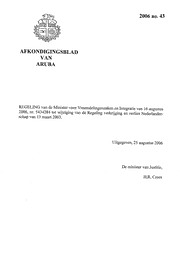
Afkondigingsblad van Aruba 2006 no. 43
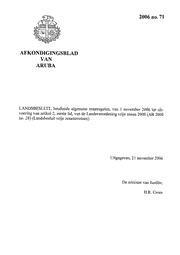
Afkondigingsblad van Aruba 2006 no. 71
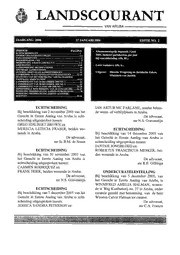
Landscourant van Aruba 2006, no. 02
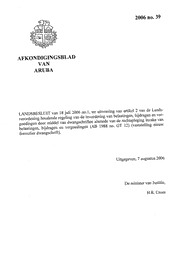
Afkondigingsblad van Aruba 2006 no. 39

Avertissements Agricoles - Grandes cultures - Ile de France - 2006 - 14
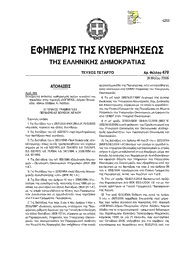
Greek Government Gazette: Part 4, 2006 no. 479
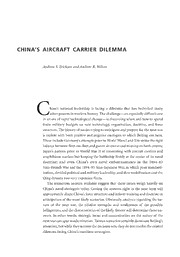
DTIC ADA519352: China's Aircraft Carrier Dilemma

Hoard's Dairyman 2010: Vol 155 Index
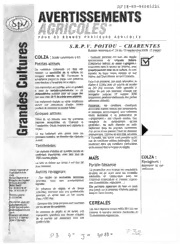
Avertissements Agricoles - Grandes cultures - Poitou Charentes - 2006 - 24

DTIC ADA520646: War Gaming: Space Perspective

Fundamentals of Risk Management: Understanding, Evaluating and Implementing Effective Enterprise Risk Management

La Maternitat d’Elna

The World of Juba II and Kleopatra Selene: Royal Scholarship on Rome's African Frontier (Routledge Classical Monographs)

